Tuesday Triage #24
- TUESDAY TRIAGE #24 by Vadim Drobinin
- On taking time to rest
- Beef Wellington
- Cured salmon (gravlax)
- Smoked salmon (lox)
- Tuna
- The British Martini
- Things I enjoyed reading
- 1. What the Hole Is Going On? The very real, totally bizarre bucatini shortage of 2020 by @rachel_handler
- 2. Why the iPhone Timer App displays a Fake Time by @_lhermann
- 3. Reading, That Strange and Uniquely Human Thing by Lydia Wilson
- 4. A Brief History of Jamaican Jerk by Vaughn Stafford Gray
- 5. Learning to Play the Chaos Game by @hardmath123
- 6. Who’s sharing my data? … and who the hell is Dave M. Rogenmoser? by Yoav Aner
- 7. “It turns out” by James Somers
- 8. Reverse Engineering the source code of the BioNTech/Pfizer SARS-CoV-2 Vaccine by @PowerDNS_Bert
- 9. Designer as a writer by Stas Aki
- 10. 100 Tips For A Better Life by @ideopunk
- Things I didn't know last Tuesday
- 1. Tim Burton didn't direct Tim Burton's The Nightmare Before Christmas
- 2. Asterisk was introduced by editors to denote duplicate lines
- 3. Whiskey Sours are seasonal
- 4. Mistletoe is a kind of parasite
- 5. English taxes were paid in eels
- 6. Stoops
- 7. Treasonous glasses
- 8. A Royal warrant for kidnapping
- 9. IP address parsing
- 10. McDonalds Airplane
- Book of the week
- Thank you and see you in a week!
TUESDAY TRIAGE #24
by Vadim Drobinin ¶
Your weekly crème de la crème of the Internet is here!
29.12.2020 (read in browser)
On taking time to rest ¶
'Tis the season to be jolly, and jolly we are indeed.
Given that I have almost two weeks of freedom from sitting in front of the screen, I finally got a chance to focus on running a few urgent errands, namely cooking and mixing cocktails (also known as taking time to rest and to get ready for the next year).
Beef Wellington ¶
Every year I make Beef Wellington for Christmas; this year I end up wrapping up two – for the Boxing day breakfast as well.

Despite a fairly straightforward recipe, I don't particularly enjoy eating an overcooked steak or slicing a soggy pastry, so prefer to stick to a bulletproof recipe, which includes quickly searing the beef, vacuum-packing it and cooking in sous-vide until medium-rare, then freezing so it won't be cooked in the oven at all.
I also add chestnuts to duxelles paste for stronger earthy flavours.
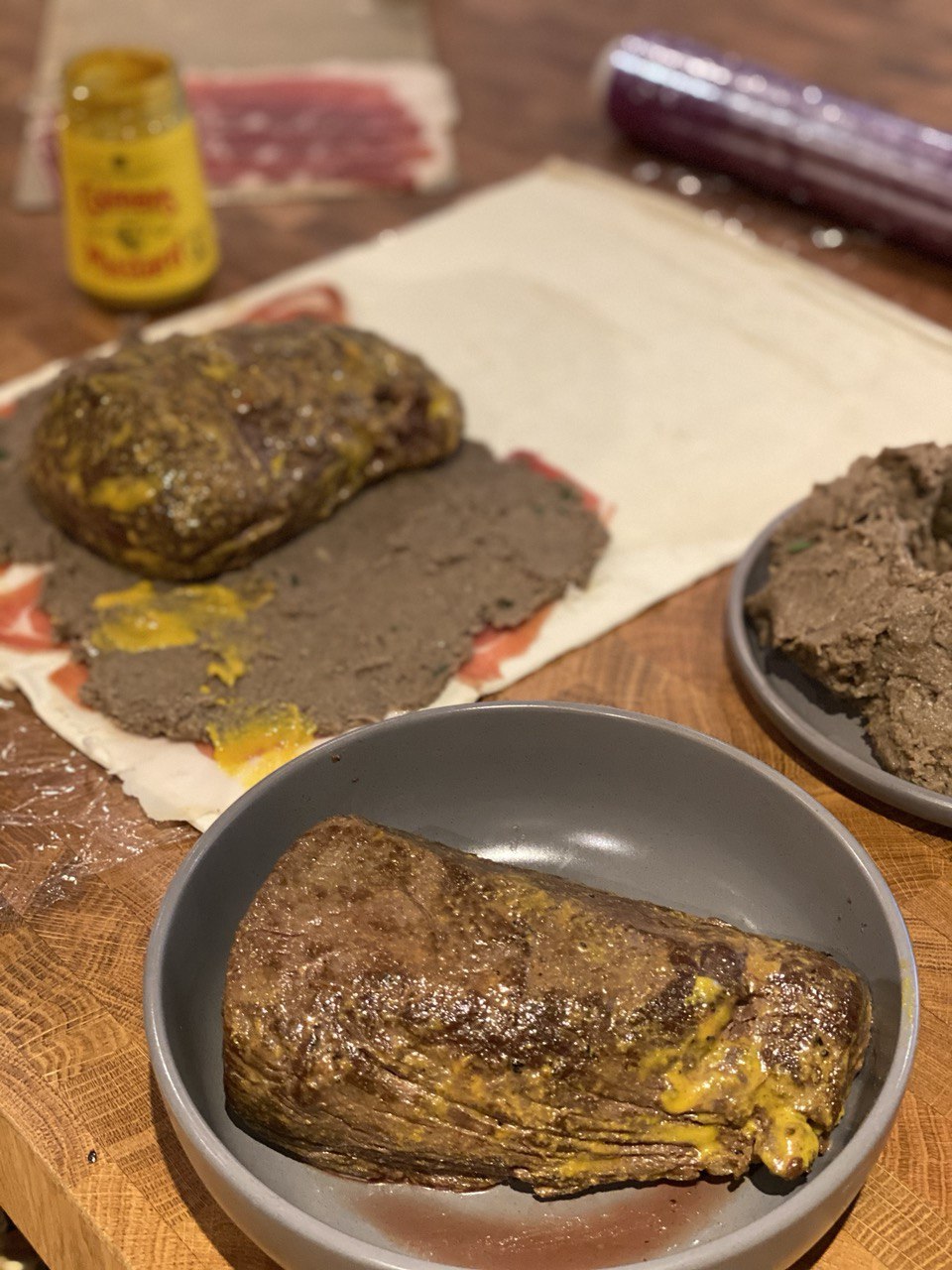
My scoring skills leave something to be desired though.
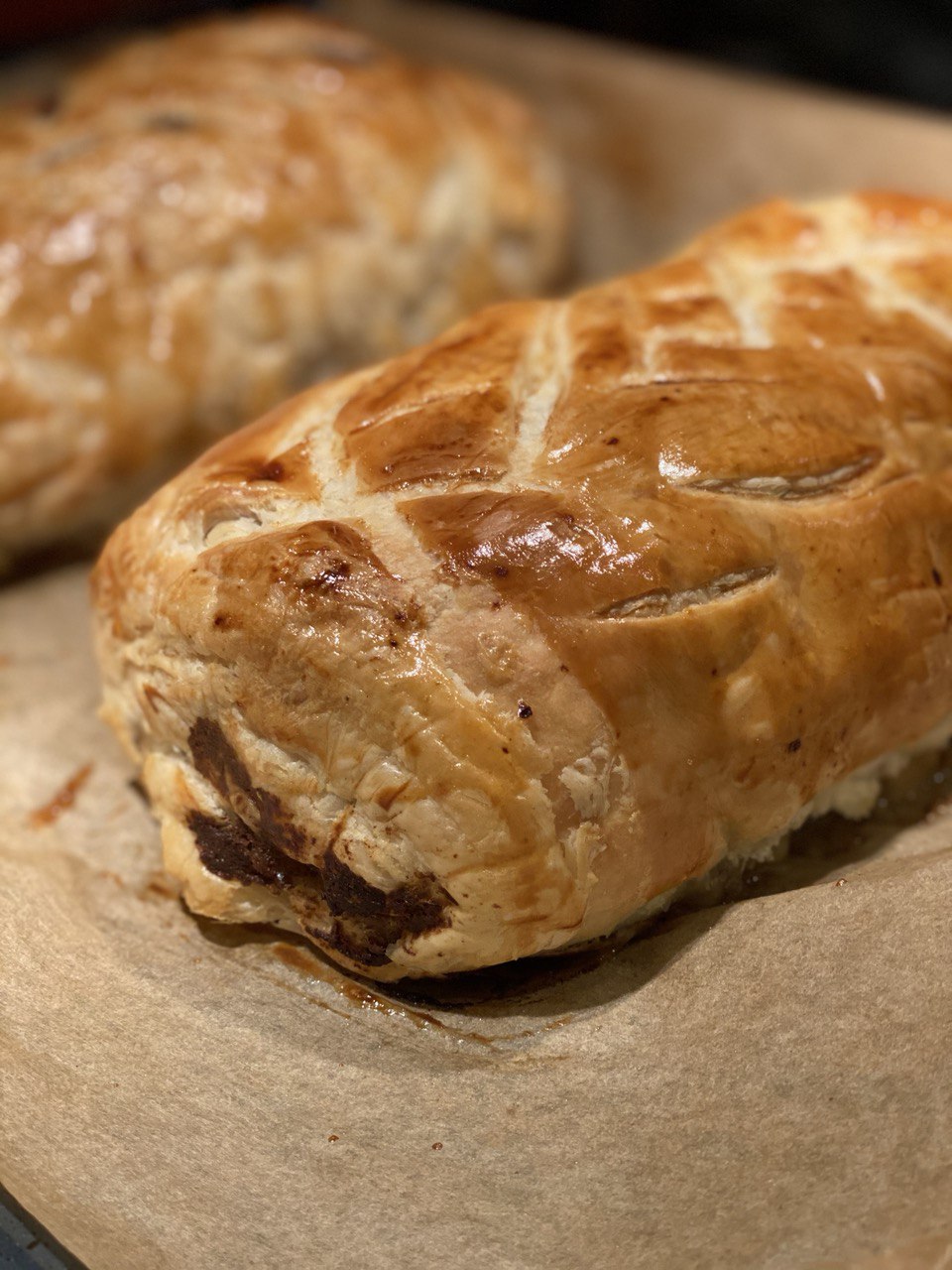
Cured salmon (gravlax) ¶
We've also managed to find a lovely whole fresh salmon and Sasha did all the dirty job of deboning and preparing it.
I wanted to cure fish for a long time but didn't really trust pieces they sell over counters. This one is my node to a basic gravlax recipe, but in addition to the classic salt, sugar, pepper, and dill
combination I added a few ounces of aquavit, aged in oak barrels at sea.
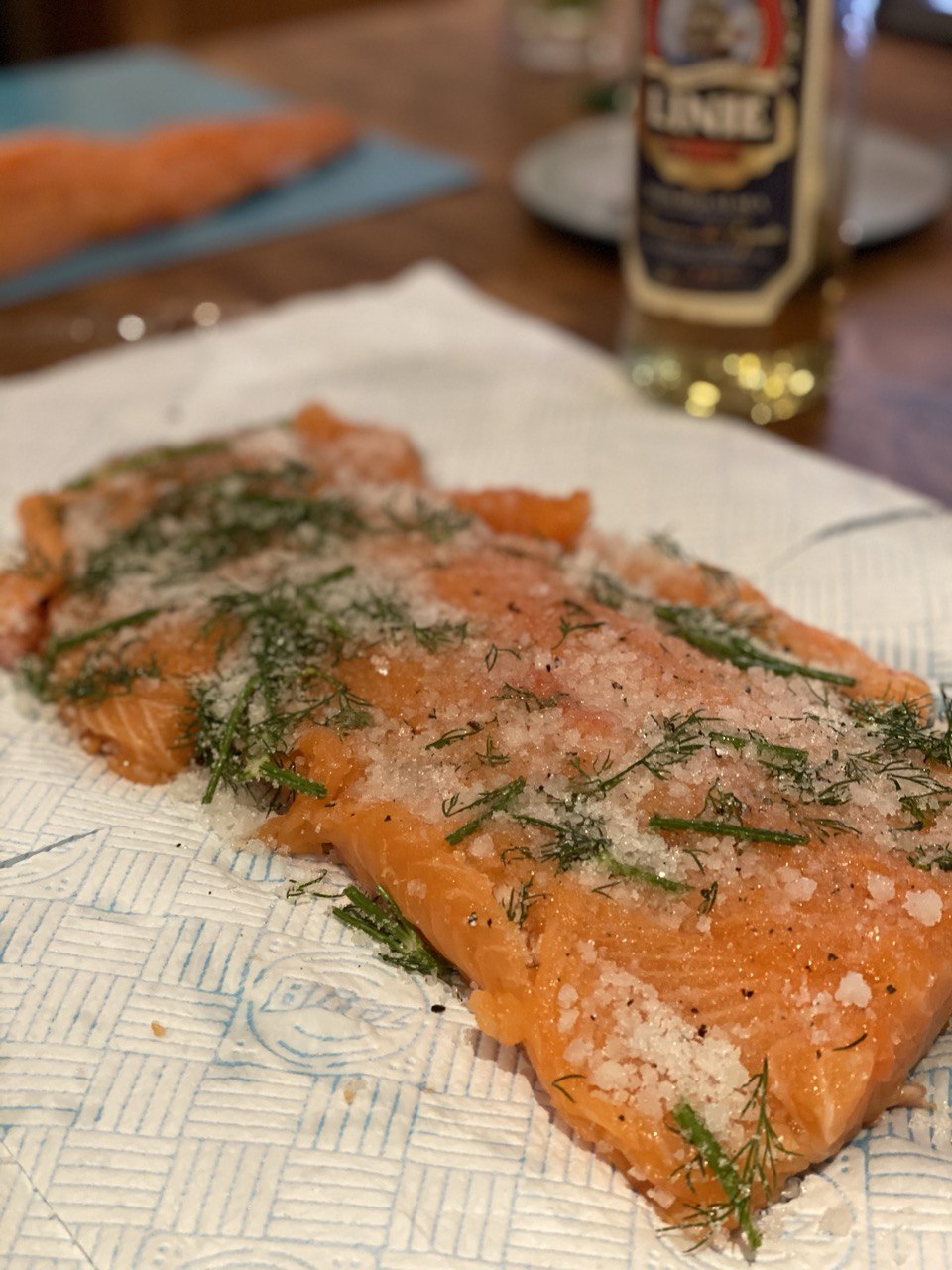
I was drying out for 48 hours and then cleaned and sliced to consume on its own, in bagels, or in pizza.
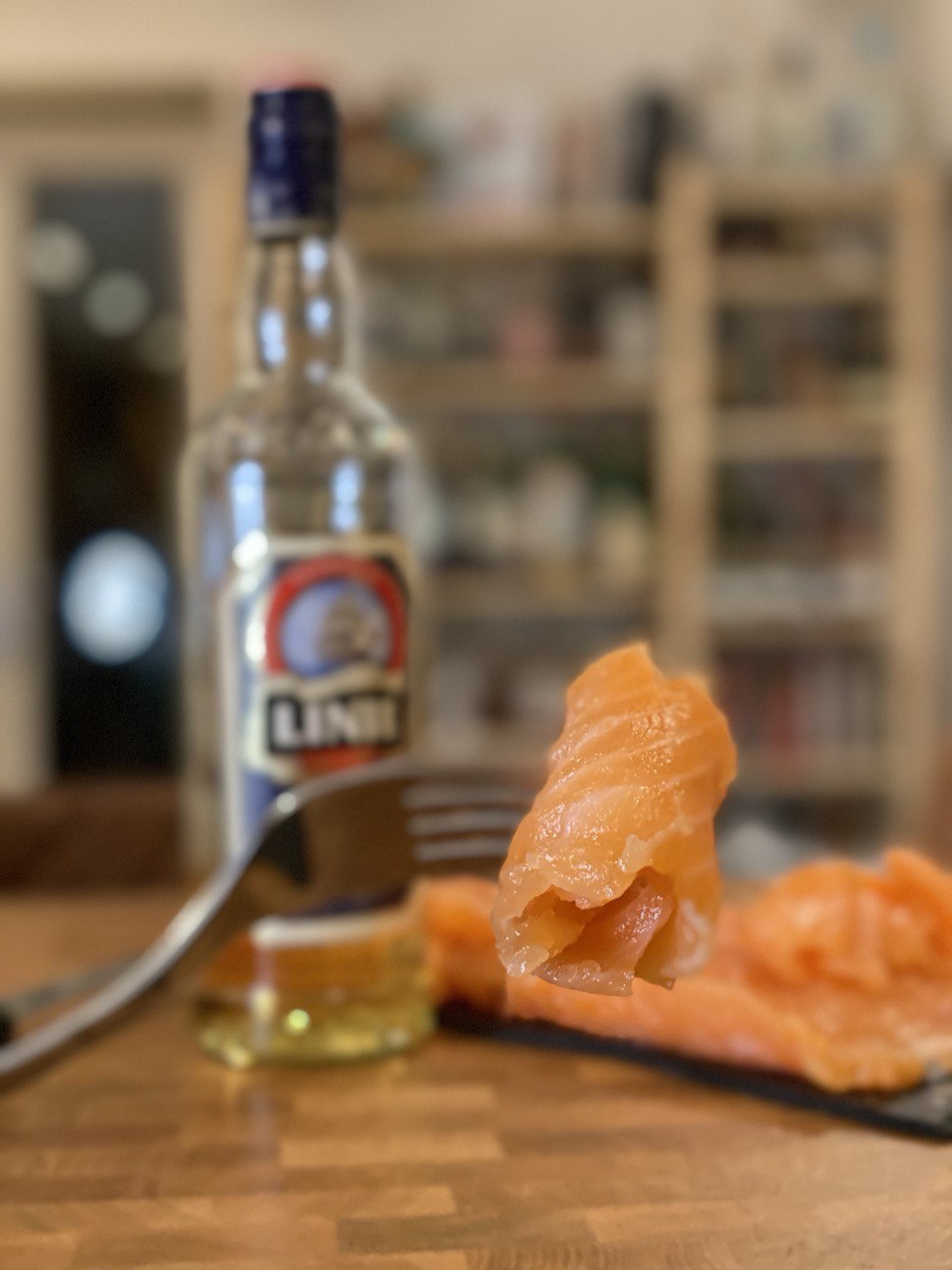
Smoked salmon (lox) ¶
Pretty much the same as cured salmon, but I swapped aquavit for a Christmas edition dry gin with very pronounced tangerine notes, reversed sugar to salt ratio, and cured it for only 24 hours.

Then added more brown sugar and smoked low and slow for thirty minutes or so. It'd be exceptionally good in bagels but somehow disappeared in a day.
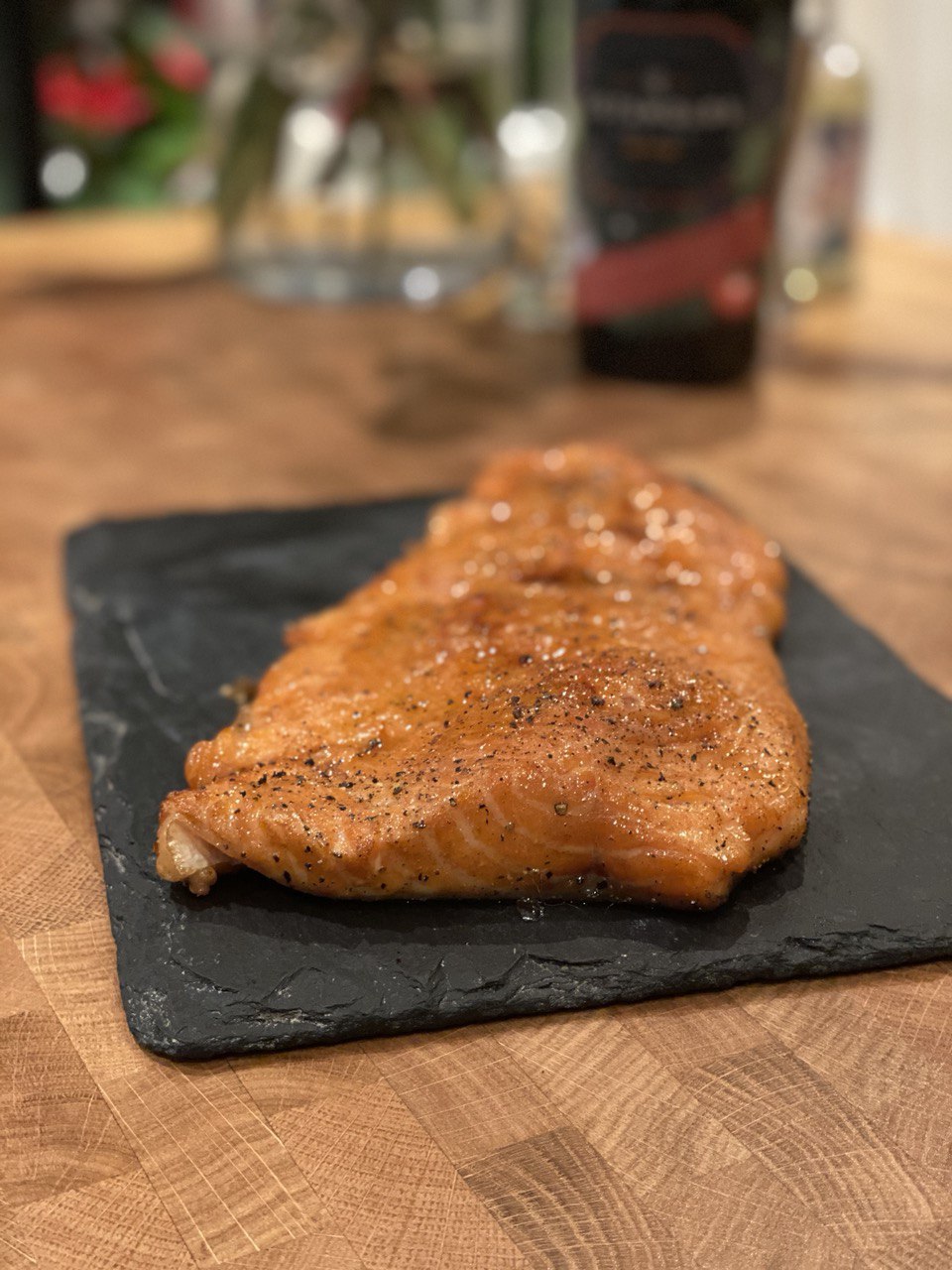
Tuna ¶
We also seared a few tuna steaks.
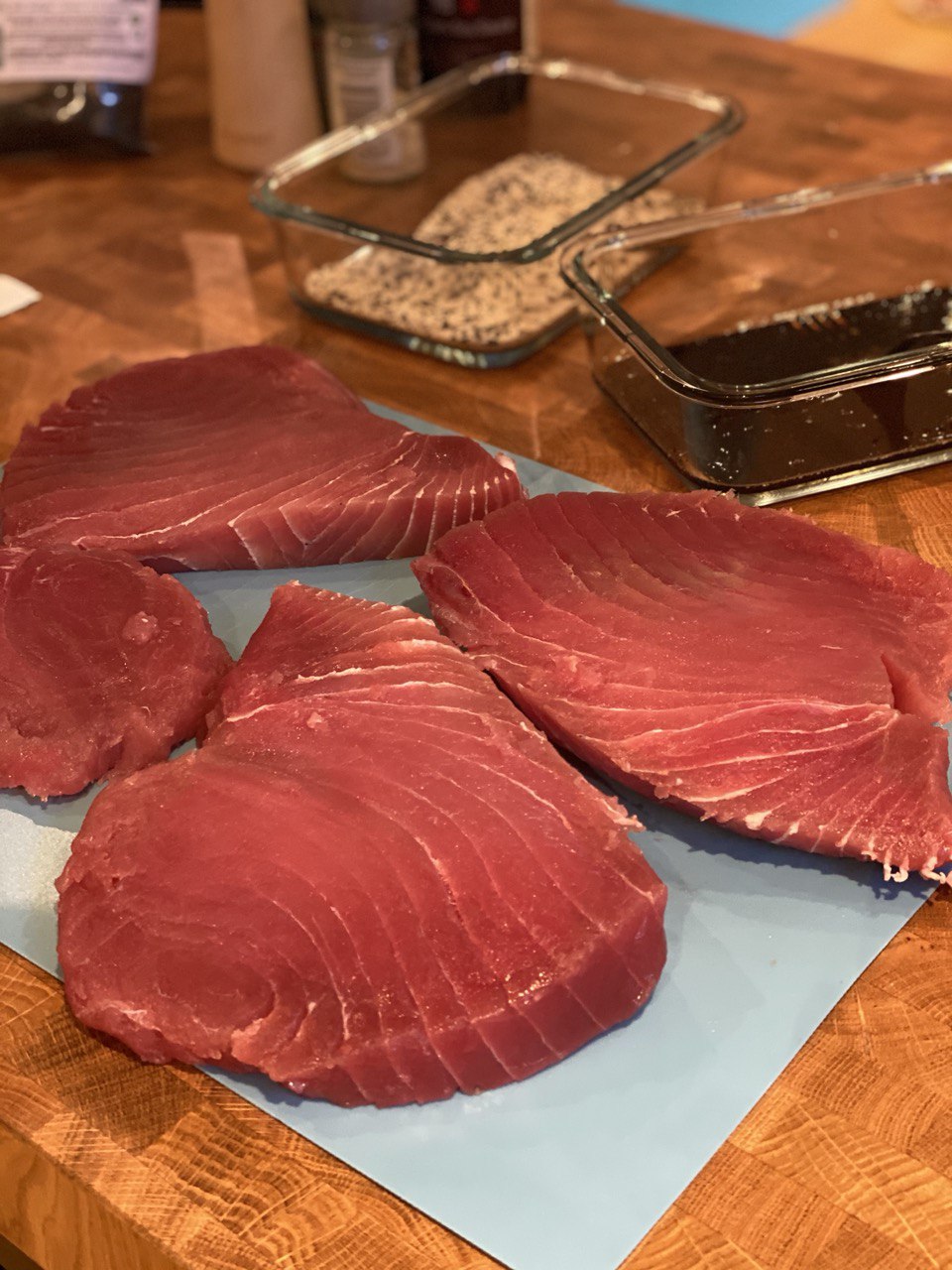
A nice trick to make sure the sesame coating sticks to the steaks is to cover them in a mix of sesame oil, wasabi, and soy sauce.
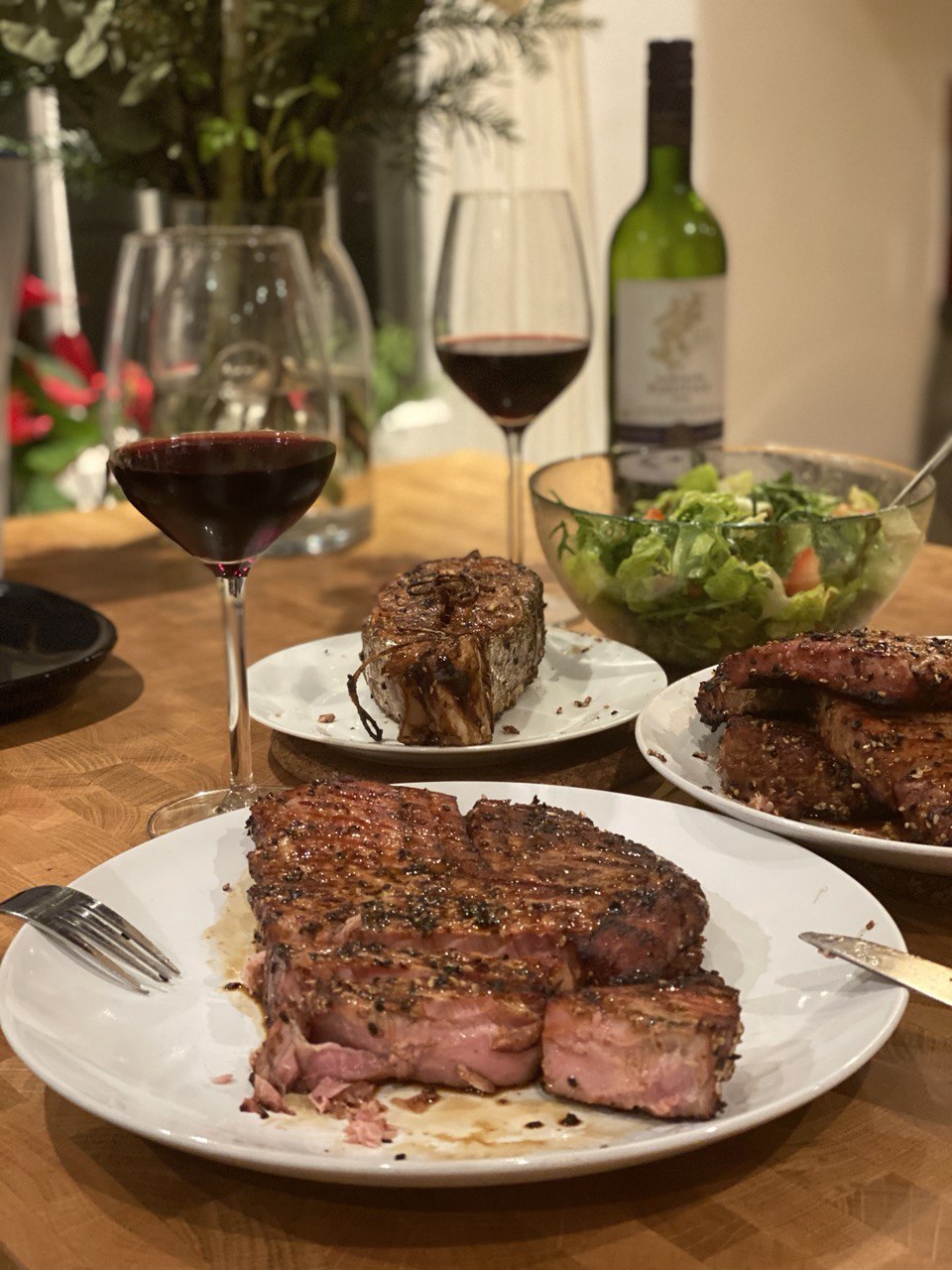
The leftovers are great in pastas, just saying.
The British Martini ¶
Inspired by a selection of locally sourced (well, at least locally cooked) ingredients, I went for a riff on Martini with vermouth made out of British grapes, and an apple eau de vie from local apples.
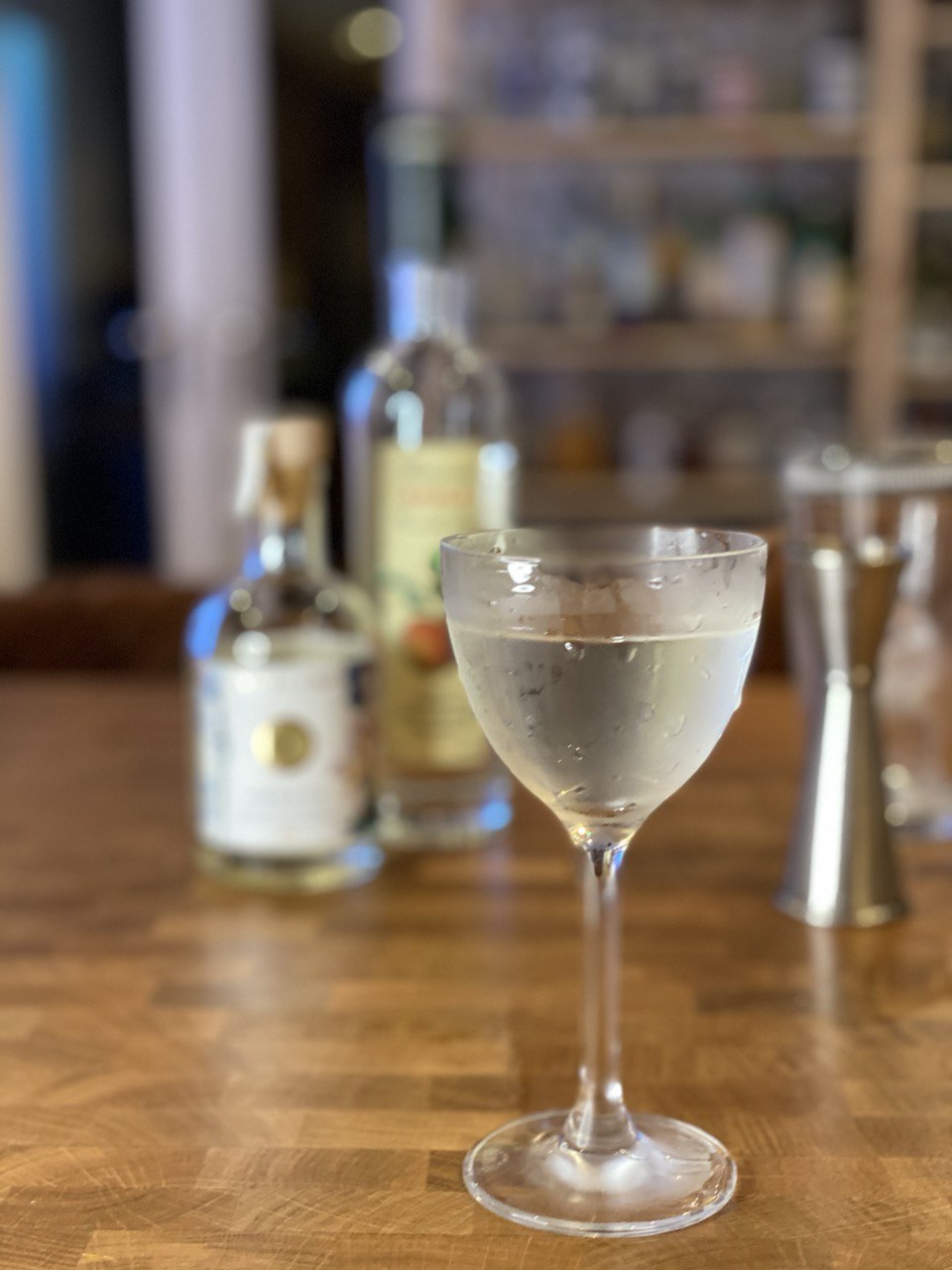
Now it's time to come up with a few dishes and drinks for the New Year's Eve. See you in 2021?
Things I enjoyed reading ¶
1. What the Hole Is Going On? The very real, totally bizarre bucatini shortage of 2020 by @rachel_handler ¶
This is one of this year’s best pieces of investigative journalism I've read. And it is about pasta. I have struggled quoting in such a way not a single detail is spoiled, so please do me a favour and read about the investigation behind unexpected disappearance of bucatini by yourself.
If you boil bucatini for 50 percent of the time the box tells you to, cooking it perfectly al dente, you will experience a textural experience like nothing else you have encountered in your natural life. When cooked correctly, bucatini bites back. It is a responsive noodle. It is a self-aware noodle. In these times, when human social interaction carries with it the possible price of illness, bucatini offers an alternative: a social interaction with a pasta.
As a side note, among dozens (maybe hundreds) of types of past one could make at home, bucatini is one of those pretty much impossible to make without a dedicated machine (and I am not talking any-pasta-machine, I am talking the-pasta-machine-with-tubes-and-sprouts, most likely a very rustic one and passed through generations).
2. Why the iPhone Timer App displays a Fake Time by @_lhermann ¶
I use the countdown timer quite often (albeit these days I mostly stick to the stopwatch; it's more versatile) and yet never noticed how Apple sacrificed precision in lieu of user experience. Which actually is a good sign as it means that they made the right decision.
The iPhone countdown timer doesn’t strictly display the correct time but adds 500ms, or half a second, to the remaining time. It does this to make the reading of time more intuitive for humans. The alarm at the end of the countdown is not affected by this 500ms inaccuracy.
3. Reading, That Strange and Uniquely Human Thing by Lydia Wilson ¶
Reading about reading rarely feels right; maybe a story on humans' evolution to prompt reading (and initially writing) abilities might lure you in nonetheless.
Her experiment was based on her own roots of learning to read in Japan. Every Japanese child learns two systems of writing, the kanji system, based on Chinese characters, and the kana system, which is purely phonetic (though the units are syllables rather than the individual sounds of alphabet systems). This dual approach lasts their entire lives, with all books written in both systems (except for children’s books, for learning purposes). This means that you can test the difference in reading different scripts without worrying about controlling for reading proficiency or language differences.
Given that all writing systems are younger than 5000 years, which is nothing compared to speech, it is very interesting to see how it will keep evolving in the future.
4. A Brief History of Jamaican Jerk by Vaughn Stafford Gray ¶
Despite visiting three dozens countries, I haven't been to Jamaica (yet) and my first introduction to the Jamaican Jerk Chicken has happened in London, prior to its annual Notting Hill festival. While all locals were boarding up their entrances with wooden panels, numerous stalls offering these dishes just popped out of nowhere.
Jerk today has developed from portable, shelf-stable sustenance like beef jerky into a culinary mainstay. It, too, has gone from a celebratory meal to a part of everyday dining. Jerk is on the menus of school cafeterias and office canteens. Throughout the island, "jerk centers" (restaurants dedicated to jerk cuisine), jerk pan men (male chefs who operate roadside jerk stands using converted metal oil drums as smokers/grills), and women-operated cookshops that have jerk Fridays, are prolific.
The author refers to them as "flavor bombs... as deep and fragrant as it gets" and they definitely looked like one. Maybe next time I should give it a try.
5. Learning to Play the Chaos Game by @hardmath123 ¶
You might not guess it by the name, but this is a very Christmas-inspired article.
The theory is the theory of Iterated Function Systems, which is almost exactly what it sounds like. Start with a set of affine functions (affine because that’s what camera-projector-systems do) and repeatedly apply them to a set of points, taking the union at each step. Regardless of where you start, you will soon end up with a fractal structure which is the fixed point of the system. Why fractal? —because the self-similarity comes from the infinitely-nested composition of the affine functions.
And if rendering of fractal trees is of no interest to you just browse the pictures of fractals turning into Christmas trees.
6. Who’s sharing my data? … and who the hell is Dave M. Rogenmoser? by Yoav Aner ¶
If I were to pick a single topic people get concerned about more and more, it'd be privacy. There are quite a few well-known ways to request as much data companies hold onto you as possible, and yet the new ones keep flowing in:
Technically, it’s true that Dave and his friends don’t share my personal details directly. i.e. they won’t upload my actual email address to Facebook. They will upload a hash of my email. But then, Facebook obviously holds its own giant list of hashed emails and other personal details, so then when two hashes match, Facebook knows that it’s me. That’s the way they can show me this list of companies.
Personally I wasn't even aware of this part to the Facebook settings; not that I use Facebook even remarkably often.
7. “It turns out” by James Somers ¶
It turns out the words are fairly powerful and can easily mess up with the reader's perception.
[...] readers are trained, slowly but surely, to be disarmed by it. They learn to trust the writers who use the phrase, in large part because they come to associate it with that feeling of the author’s own dispassionate surprise: “I, too, once believed X,” the author says, “but whaddya know, X turns out to be false.”
Who wold have thought?
8. Reverse Engineering the source code of the BioNTech/Pfizer SARS-CoV-2 Vaccine by @PowerDNS_Bert ¶
I avoid commenting on news-related articles, or add up to the overall news trends within this cozy weekly newsletter; on that note, I can't hide from other folks the articles I enjoyed a lot.
But first, a backstory: I spent three years of my university time working on DNA restoration algorithms. I never enjoyed biology, and being a Software Engineering graduate has chosen a path as far from computer science as possible. And yet, I almost transfered from this faculty to a linguistic major with a focus on natural language processesing.
Luckily, I encountered that the DNA is pretty much an alphabet with four letters, and as a language it has its own rules and exceptions, and I've been fascinated by bioengineering ever since.
This post is a rare way to catch a glimpse of how this magic works:
For computers, this is RAM, for biology it is RNA. The resemblance is striking. Unlike flash memory, RAM degrades very quickly unless lovingly tended to. The reason the Pfizer/BioNTech mRNA vaccine must be stored in the deepest of deep freezers is the same: RNA is a fragile flower.
9. Designer as a writer by Stas Aki ¶
A beautifully designed article is the best from both worlds, albeit meant to be read on a desktop.
Yet there’s more to writing and design than this. Essentially, there are two phases of both writing and designing: (1) draft and (2) polish. After the whole thing is roughly assembled in a flash of inspiration, you must take a break, change the pace, and refine the details.
I really like the concept of approaching design tasks the same way one approaches writing (and vice versa; albeit the latter is less common to me).
10. 100 Tips For A Better Life by @ideopunk ¶
For those wrapping up a set of New Year resolutions or simply thinking of planning something ahead, a nice selection of tips for a "better life". I don't agree with some of them but I do like quite a few, and I enjoy recognising where some are coming from:
You have a plan. A time-traveller from 2030 appears and tells you your plan failed. Which part of your plan do you think is the one that fails? Fix that part.
Things I didn't know last Tuesday ¶
1. Tim Burton didn't direct Tim Burton's The Nightmare Before Christmas ¶
OK, the title might be a bit off as he was listed as a producer anyway. However, I always though he also directed the movie which he didn't.
Burton could not direct because of his commitment to Batman Returns, and he did not want to be involved with "the painstakingly slow process of stop motion". To adapt his poem into a screenplay, Burton approached Michael McDowell, his collaborator on Beetlejuice.
2. Asterisk was introduced by editors to denote duplicate lines ¶
Judging by the article, editors two thousand years ago were quite creative and came up with numerous characters in the absence of computers and highlighters.
The asterisk, in turn, was created by one of Zenodotus’s successors. In the second century bce, Aristarchus of Samothrace introduced an array of new critical symbols: the diple (>) called out noteworthy features in the text; the diple periestigmene (⸖) marked lines where Aristarchus disagreed with Zenodotus’s edits; and, finally, the asteriskos (※), or “little star”, denoted duplicate lines.
3. Whiskey Sours are seasonal ¶
Apparently if we were to map out daily views of the Wikipedia's article on whiskey sours, we'd see a weird trend.
The big spikes happen on New Year's Day and the small wobbles are weekly cycles.
I can't believe people don't drink them daily. Also check out that chart – such a great way to highlight annual trends.
4. Mistletoe is a kind of parasite ¶
If you are like me and have thought that mistletoes are trees, here is a creepy fact: due to a weird combination of present and missing genes, they actually attack trees and parasite on their system:

The way that the plant’s rounded evergreen leaves and white berries tightly hug the branches of the trees on which it grows probably inspired that association. The truth about this botanical intimacy is less romantic: Mistletoe is a kind of parasite. Its leaves produce sugars by photosynthesis, but instead of roots, it has structures that pierce the host tree’s vital tissues to suck out nutrients and water.
5. English taxes were paid in eels ¶
Those ordering pies in traditional British establishments are well aware of a lovely snack often offered alongside, which is jellied eels. Funnily enough, back then eels were used as a payment.
Domesday and subsequent documents show that rents of multiple thousands of eels a year were common for single fisheries or mills. All told, at the time of the Great Survey in 1086 people living in England owed more than 500,000 eels in taxes each year to their landlords.
To be fare, taxes were also paid in meat, ale, etc, but eels... just sound so inconvenient.
6. Stoops ¶

These "ladders" are quite common all over the world, but I never seens as many of them as I did in New York. Well, now I know how they are called.
New Yorkers can thank the Dutch settlers of the 17th century for the stoop [...], arguably the city’s most iconic and beloved architectural feature.
7. Treasonous glasses ¶
In my childhood I used to collect mugs and glasses, brought from all over the world. These days I am mostly scavenging for rare cocktail glasses.

They may seem like mere decoration, but to the right eyes, they were a message, and a dangerous one at that. The original owners of this glass must have been careful who they let see it. In England, circa 1745, toasting with it could constitute treason.
Good to know that even decorations might hold a powerfull message. From now on I will have to preface each served cocktail with a disclaimer.
8. A Royal warrant for kidnapping ¶
Who'd think that the Royal Choir had the same recruiting system as the modern Russian Army?
As master of the royal children’s choir, Giles had the right to forcibly conscript young singers. Queen Elizabeth had granted him a warrant to “take…so many children as he or his sufficient deputy shall think meet, in all cathedral, collegiate, parish churches, chapels, or any place or places as well within liberty as without.”
9. IP address parsing ¶
I grew up pretty sure in two things: lemons are sour, and IPs consist of four groups three digits each, separated with three dots.
And then IPv6 happened. And lemons are not that sour anymore. And now I also know that parsing IPs is probably even worse than dealing with names or dates.
The familiar
192.168.140.255notation is technically the “Class C” notation. You can also write that address in “class B” notation as192.168.36095, or in “Class A” notation as192.11046143. What we’re doing is coalescing the final bytes of the address into either a 16-bit or a 24-bit integer field.
Though probably timezones are still the worst things to parse. Prove me wrong.
10. McDonalds Airplane ¶
Maybe the fanciest McDonalds restaurant in the world is in New Zealand:
The plane, emblazoned with the McDonald's logo on its exterior, has sat in its current spot for over 30 years. It used to advertise a car dealership, the Aeroplane Car Company, but was purchased by McDonald's in 1990 and made part of that location.

Book of the week ¶
Summarising the always in progress plans for the next year, here is a great quote from Steve Coogan's Easily Distracted:
Early on my comedy career, I used to think, ‘I can unite everyone in one moment, I can make everyone laugh, erego everyone likes me. I'm not going to risk that unity by upsetting anyone’.
I though pleasing all the people all the time was the way forward. It's not. This realisation was only gifted to me following a series of rude awakenings, which certainly took their toll on me at the time [...]
I got this book for as a Secret Santa present some time ago; I do re-read it every year for I find the author to be one of the greatest comics and writers alive. That's a rare trait, and the way he thinks of the world and people around (worth exploring and worth ignoring, respectively) is something I use as my Northern star whenever I write.
It's also funny how I watched Around the World in 80 Days where he played the main character in 2004, and didn't know he is also a writer for more than a decade.
Thank you and see you in a week! ¶
If you have any questions, or want to suggest a link for the next newsletter, please drop me a message on Twitter or reply to this email.
Cheers! 🍸
